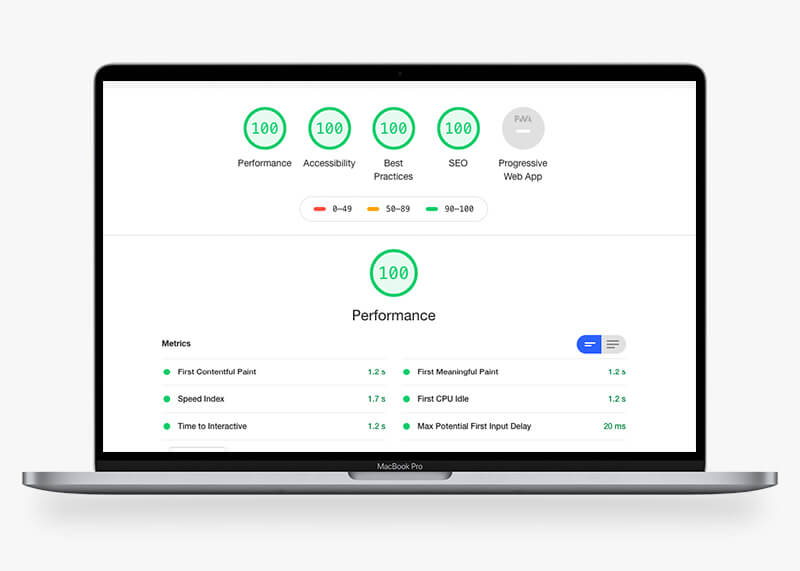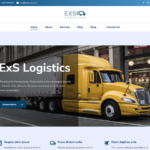WordPress is a widely-used content management system (CMS) that supports a vast number of websites worldwide. However, one common problem that website owners face is slow page load times. Slow website speed can not only harm your user experience but also negatively impact your search engine rankings. In this article, we will discuss five tips for improving your WordPress site speed.
1. Choose a Lightweight WordPress Theme
The first step in improving your WordPress site speed is to choose a lightweight theme. Many WordPress themes come with a lot of built-in features and options that can slow down your website. Therefore, it is important to choose a theme that is optimized for speed.
A lightweight theme typically has fewer design elements and features. It loads faster and puts less strain on your web server. You can choose a theme from the WordPress theme repository or purchase a premium theme from a reputable developer. Before choosing a theme, make sure to check its speed performance by using tools like Pingdom or GTMetrix.
When it comes to choosing a lightweight and fast WordPress theme, ExS is a great option. This theme is designed to be super fast, lightweight, mobile-friendly, and SEO-friendly. It is built with new technologies such as valid HTML5, microdata, CSS flexbox, CSS grid, and CSS variables. If you’re looking for a fast and lightweight WordPress theme, ExS is definitely worth checking out.
2. Optimize Images
Images play a vital role in enhancing the look and feel of your website, but they can also slow down your site speed. Large images take longer to load, which can increase your page load time. Therefore, it is essential to optimize your images before uploading them to your WordPress site.
You can use image optimization tools like Adobe Photoshop, GIMP or online tools like TinyPNG, Compressor.io to reduce the size of your images without compromising on quality. You can also use lazy loading plugins like Lazy Load or BJ Lazy Load to load images only when they are needed, which can significantly improve your site speed.
3. Minimize HTTP Requests
Every time a user visits your website, their browser sends multiple requests to your web server to load various elements of your website, such as images, scripts, stylesheets, etc. These requests are called HTTP requests, and they can significantly impact your site speed.
To minimize HTTP requests, you can:
– Combine multiple CSS and JavaScript files into one file to reduce the number of requests.
– Use CSS sprites to combine multiple images into one image, which reduces the number of requests.
– Remove unnecessary plugins and scripts that you don’t need.
By minimizing HTTP requests, you can significantly improve your site speed and reduce your page load time.
4. Enable Caching
Caching is a technique that stores frequently accessed data, such as HTML pages and images, on the user’s device or web server. When a user visits your website, the cached data is loaded from their device or web server, which reduces the number of requests made to the web server and improves your site speed.
You can enable caching by using a caching plugin like W3 Total Cache or WP Super Cache. These plugins generate static HTML files from your dynamic WordPress site, which reduces the time it takes to load your website. They can also compress your files and optimize your database to improve your site speed.
5. Use a Content Delivery Network (CDN)
A Content Delivery Network (CDN) is a network of servers located around the world that caches your website’s static files, such as CSS and JavaScript files, and images. When a user visits your website, the files are loaded from the nearest server, which reduces the distance the data needs to travel and improves your site speed.
You can use a CDN service like Cloudflare or MaxCDN to improve your site speed. These services have servers located in different parts of the world, which can significantly reduce your website’s load time. By using a CDN, you can also reduce the load on your web server, which can improve its performance.
In conclusion, slow website speed can harm your user experience and negatively impact your search engine rankings. By following these five tips, you can significantly improve your WordPress site speed and enhance your website’s performance. Choose a lightweight theme, optimize your images, minimize HTTP requests, enable caching, and use a CDN to improve your website’s speed and performance. If you’re still struggling to achieve a faster loading time, it might be time to consult with a professional web design agency. Click here to find a reputable agency that can help optimize your website’s speed and overall performance.




